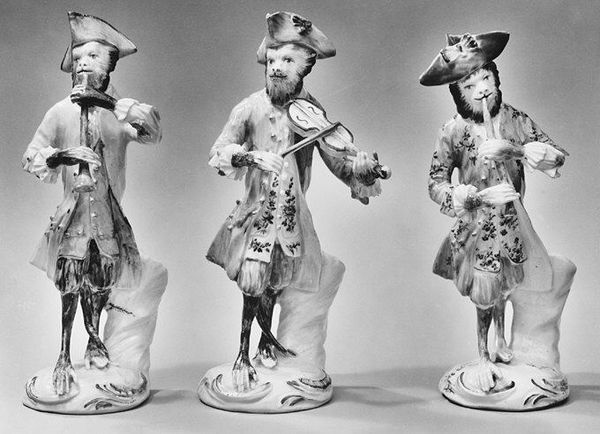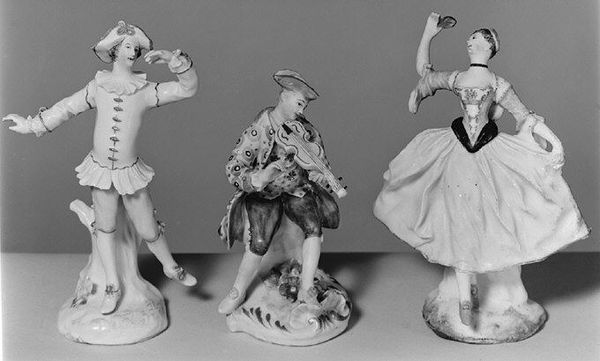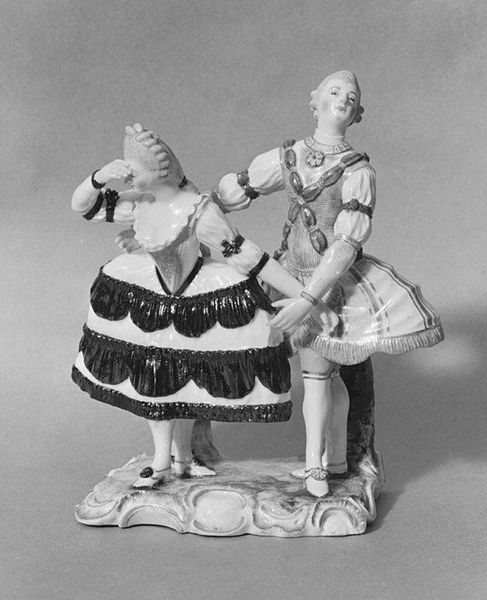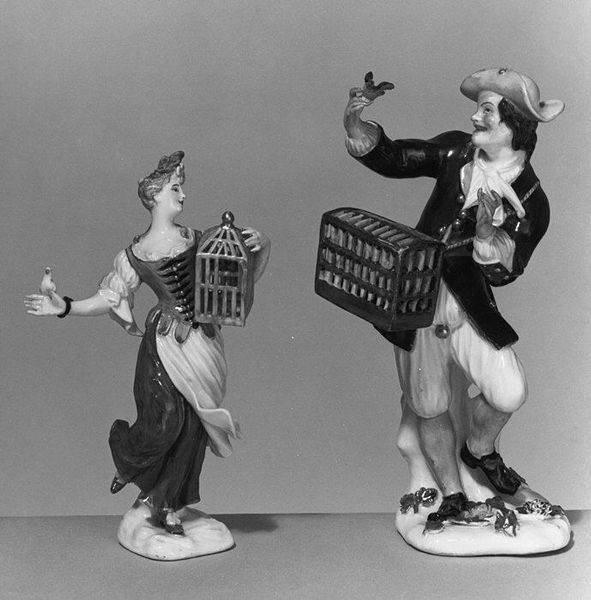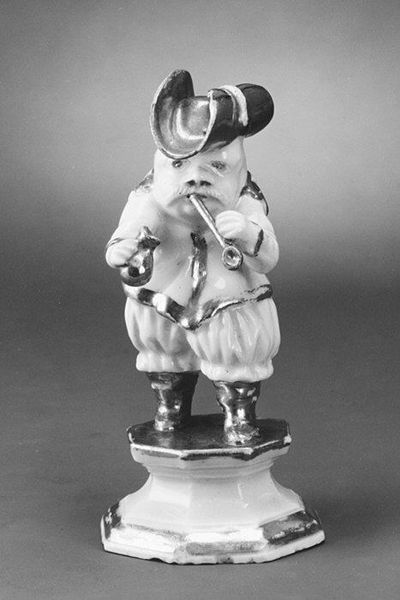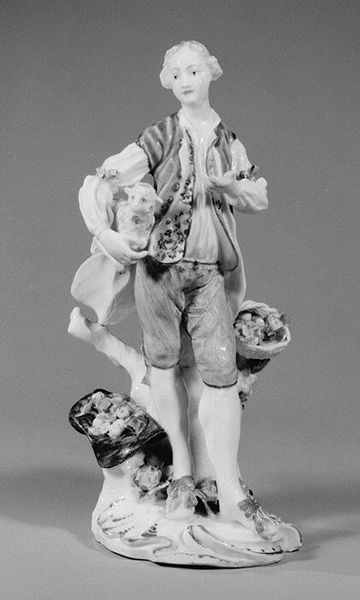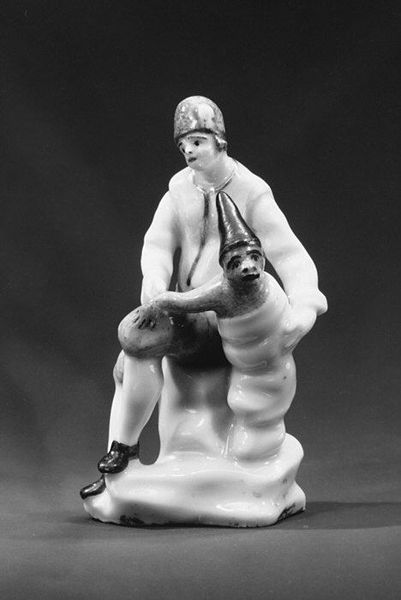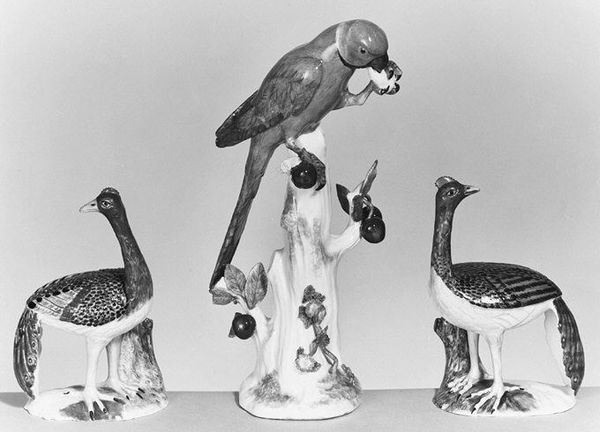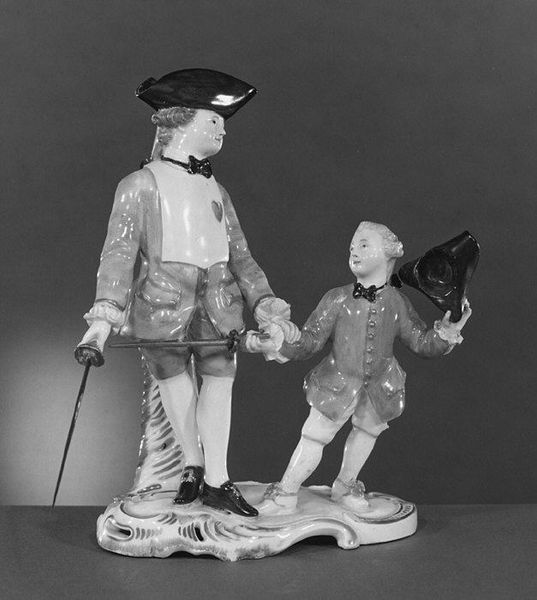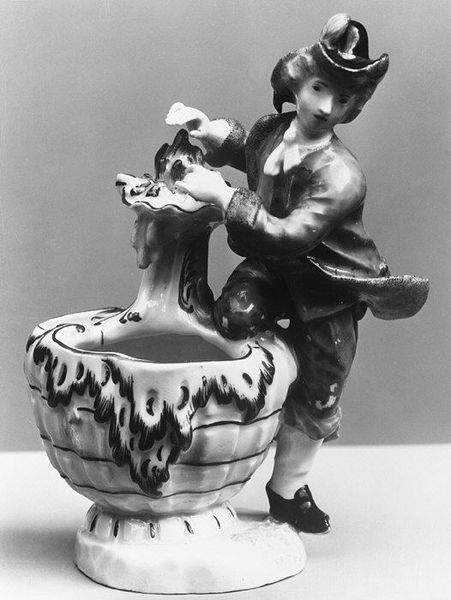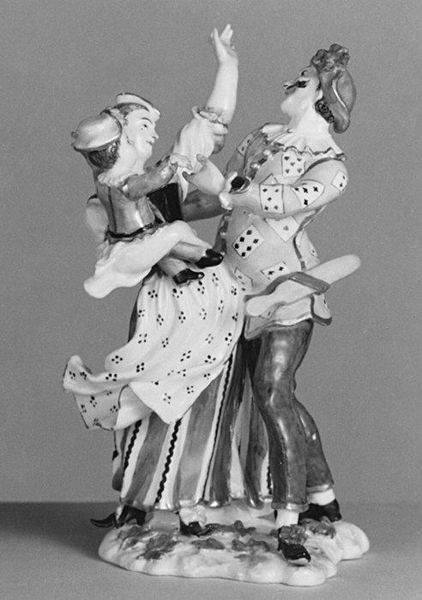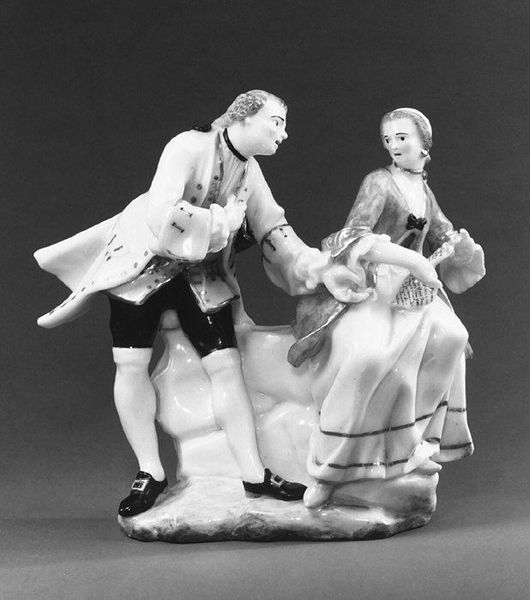
Putto as Mercury (one of three figures) 1765 - 1775
0:00
0:00
ceramic, porcelain, sculpture
#
sculpture
#
ceramic
#
porcelain
#
figuration
#
sculpture
#
history-painting
#
monochrome
#
decorative-art
#
miniature
#
rococo
Dimensions: Height: 4 1/4 in. (10.8 cm)
Copyright: Public Domain
This porcelain figure of a putto as Mercury was made at the Nymphenburg Porcelain Manufactory sometime after 1747. Porcelain is a challenging material, requiring skilled labor. From mixing the clay to molding, firing, and painting, each stage demands precision and expertise. Consider the texture; smooth and delicate, yet strong enough to hold its form. Notice the fine details, such as the feathers of Mercury's wings, or the draping of his clothing. These were achieved through careful sculpting and the application of color. The firing process vitrifies the clay, giving it a translucent quality and making it durable, but it's a process that's difficult to control, with high rates of failure. The Nymphenburg factory was a major producer of luxury goods, catering to the elite. These porcelain figures were not merely decorative, they were also symbols of status and refinement. The creation of porcelain was a complex and laborious process, reflecting the social and economic structures of its time. By appreciating the materials, making, and social context of this putto, we understand how it transcends the boundaries between craft and fine art.
Comments
No comments
Be the first to comment and join the conversation on the ultimate creative platform.
